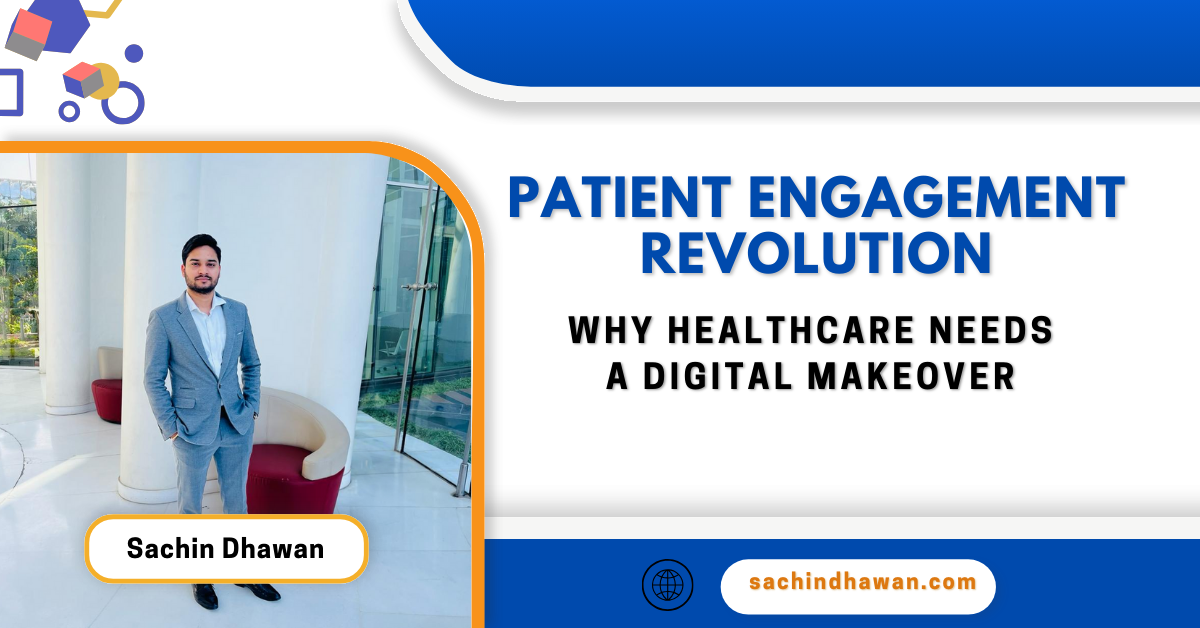Patient Engagement Revolution: Why Healthcare Needs a Digital Makeover

Patient Engagement Revolution: Why Healthcare Needs a Digital Makeover
Patient Engagement Revolution: Why Healthcare Needs a Digital Makeover
The healthcare landscape is undergoing a seismic shift. Patients are no longer passive recipients of care; they're demanding a more active role in managing their health. This transition, fueled by technology and a growing emphasis on preventative care, is driving a patient engagement revolution.
Why is a Digital Makeover Essential?
Traditional healthcare systems often struggle to meet the evolving needs of patients. Long wait times, limited appointment options, and impersonal interactions can lead to frustration and disengagement. A digital makeover can bridge this gap by:
- Empowering patients: Provide educational resources, online appointment scheduling, and secure access to medical records.
- Enhancing communication: Enable two-way communication through secure messaging platforms and telehealth consultations.
- Promoting preventative care: Utilize wearable devices and apps to track health vitals, encouraging proactive health management.
- Improving medication adherence: Utilize digital reminders and refill options to ensure patients stay on track with their treatment plans.
The Benefits of a Patient-Centric Approach
By embracing digital tools and fostering patient engagement, healthcare organizations can reap significant benefits:
- Improved patient outcomes: Empowered patients are more likely to adhere to treatment plans and take a more active role in their health, leading to better overall outcomes.
- Increased patient satisfaction: A more convenient and personalized healthcare experience leads to higher patient satisfaction and loyalty.
- Reduced healthcare costs: Improved medication adherence, preventive care, and early intervention can help reduce the burden on healthcare systems.
Digital Tools Leading the Charge
Several digital tools are playing a crucial role in the patient engagement revolution:
- Telehealth: Provides convenient access to healthcare professionals, especially in remote areas or for patients with mobility limitations.
- Patient portals: Offer a secure platform for patients to manage appointments, access medical records, and communicate with their healthcare providers.
- Wearable devices and health apps: Empower patients to track their health data, monitor chronic conditions, and receive personalized insights.
Implementing the Digital Transformation
Here are some key considerations for healthcare organizations looking to embrace the digital revolution:
- Prioritize user experience: Design digital tools that are user-friendly, accessible, and cater to the diverse needs of patients.
- Ensure data security and privacy: Implement robust security measures to protect sensitive patient information.
- Promote digital literacy: Offer patients training and support to help them navigate and utilize digital healthcare tools effectively.
The Future of Healthcare is Patient-Centered
The patient engagement revolution is not just a trend; it's a fundamental shift in how healthcare is delivered. By embracing digital tools and fostering a patient-centric approach, healthcare organizations can create a more empowered, informed, and engaged patient population, leading to a healthier future for all.